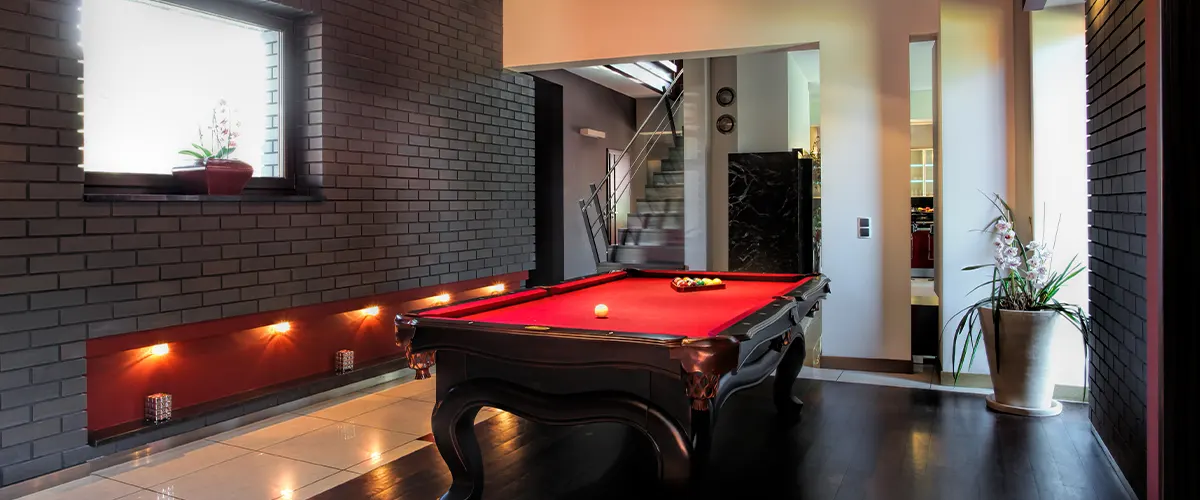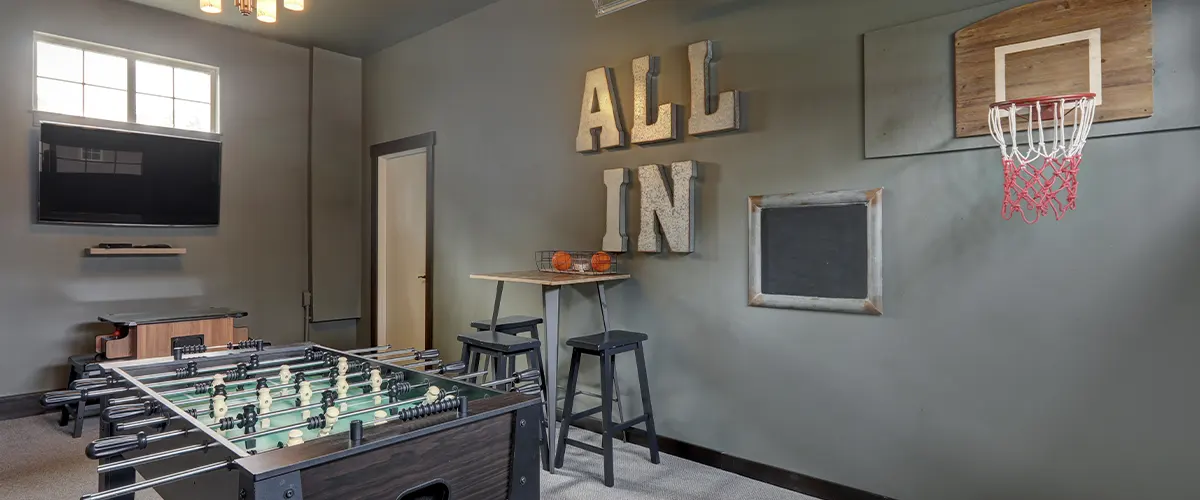If you’re like most homeowners, you probably think of your basement as little more than a place to store boxes of off-season clothes and old furniture. But did you know that your basement has loads of potential? With the right basement finishing ideas, you can turn it into one of the most popular spots in your house. In this guide, we will share inspiring basement ideas, from floor plans and wall finishings to decor. So whether you’re just starting to plan your basement remodel or you’re ready to start construction, this guide is for you!

What is basement finishing, and what are the benefits?
Basement finishing is the process of transforming an unfinished basement into a livable space. The benefits of basement finishing include:
Increased living space: A finished basement can provide you with extra living space, which can be used for a variety of purposes, such as a home office, a playroom, a guest bedroom, or a laundry room.
Improved resale value: A newly finished basement can increase the resale value of your home, making it a worthwhile investment.
Enhanced comfort: A basement that is properly finished and insulated can be more comfortable than an unfinished basement, as it will be warmer in the winter and cooler in the summer.
Greater flexibility: Once your basement is finished, you will have more flexibility in how you use the space. You can easily change the layout or furnishings to suit your changing needs.
If you’re considering basement finishing, keep reading to learn about the different basement finishing ideas that are available to you.

What Are The Different Types Of Basement Finishing?
There are a few different approaches that you can take when basement finishing. The most popular basement finishing ideas include:
Drywall basement finishing: This involves installing drywall to cover the concrete walls and ceilings. Once the drywall is in place, you can then add paint, trim, and flooring of your choice.
Paneling basement finishing: This basement finishing approach involves covering the walls with panels, which can be made of wood, vinyl, or fiberboard. You can then add trim and flooring to complete the look.
Tile basement finishing: Tiling is a popular choice for basement bathrooms, but it can also be used in other areas of the basement. Ceramic tiles are a durable and waterproof option that can add both style and function to your basement.
Carpet basement finishing: Carpet is a cozy and comfortable flooring option for basements. It is important to choose a carpet that is specifically designed for basement use, as regular carpets can be damaged by moisture.
Costs to Finish a Basement
| Project Type | Cost Range |
|---|---|
| Waterproofing | $1,900–$6,500 |
| HVAC | $2,000–$11,000 |
| Insulation | $1,500–$4,000 |
| Flooring | $2,000–$12,000 |
| Electrical Work | $1,300–$12,000 |
| Plumbing Work | $2,500–$15,000 |
| Egress Windows | $2,500–$5,300 |
| Ceiling | $1,600–$3,600 |
| Framing | $700–$1,400 |
| Drywall | $800–$3,000 |
| Painting | $1,250–$3,500 |
| Sump Pump Installation | $600–$1,600 |
| Total Cost Range: | $19,750–$74,900 |
How Do I Get Started With Basement Finishing?
If you’re ready to get started with basement finishing, the first step is to develop a plan. You’ll need to decide what you want to use the space for and how you want it to look. Once you have an idea of what you’re hoping to achieve, you can start exploring basement finishing ideas and costs.
If you’re not sure where to start, we recommend checking out some basement finishing photos for inspiration. Once you have an idea of what you want, you can start contacting basement finishing contractors to get estimates and find the right professional for the job. Here are the most common steps you should take when finishing your basement.

Clean Out The Space
Check Out The Moisture Levels
Start Working On Your Basement Walls

Move On To Your Basement Floors
Most people don’t think about their basement flooring until they have a leaky pipe or a burst water heater. By then, it’s too late to save their carpet, hardwood, or laminate floors. Even if you’re lucky enough to avoid a major flooding event, humid conditions in your basement can lead to mold and mildew growth on traditional flooring materials.
If you’re planning to finish your basement, or if you already have finished floors that are damaged by moisture, it’s time to consider a thermal flooring system. Made from high-strength PVC plastic, this type of flooring is 100% waterproof and won’t attract mold. It’s also incredibly durable so that it won’t be damaged by moisture or foot traffic.
Don't Forget About Basement Ceiling

Frequently Asked Questions
Basement remodeling is a great way to add extra living space and value to your home, but there are a few special considerations to keep in mind. For example, basement finishing can increase the humidity levels in your home, so it’s important to choose moisture-resistant materials and finishes.
Additionally, unfinished basements can be colder than other areas of the home, so you’ll want to make sure that your basement finishing includes insulation and climate control. With a little planning, basement finishing can be a great way to add value and extra living space to your home.
It can typically take anywhere from 10 to 14 days to finish a basement, depending on the size of the basement and the level of work that needs to be done.
The best way to finish a basement is by taking a phased approach. This means completing one section of the basement at a time rather than trying to do everything all at once. This will help you stay organized and on budget.
Phasing also allows you to make changes along the way without having to start from scratch if you change your mind about something. For example, you might start by finishing the basement walls and then move on to the flooring and ceiling. This phased approach will help you complete your basement finishing project in a timely and efficient manner.
It is possible to do a basement remodeling project on your own, but it is often easier and more efficient to hire a contractor.
If you decide to hire a contractor, it is important to interview several different contractors and get quotes before choosing one. Be sure to ask for references and read reviews from previous clients and check out their portfolios for finished basements.

Conclusion
So, there you have it – a quick primer on basement finishing. If you’re considering giving your home some extra living space, a finished basement is a great way to do it. And if you need help with the process, don’t hesitate to get in touch with us. We’d be happy to walk you through the options and help make your renovation dreams a reality.
